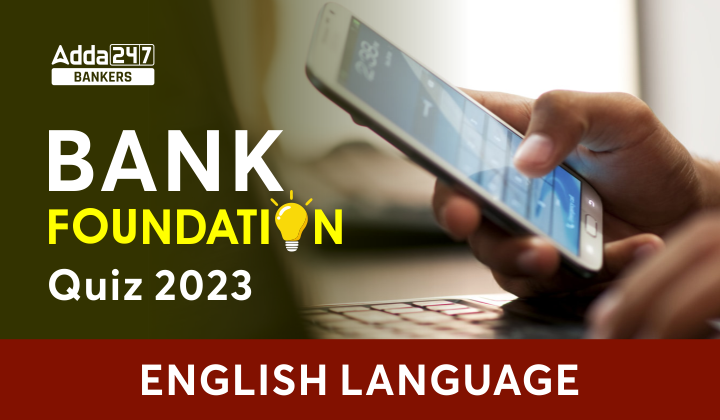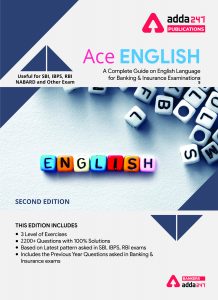Directions (1-5): Rearrange the following six sentences (A), (B), (C), (D), (E) and (F) in the proper sequence to form a meaningful paragraph; then answer the questions given below.
(A) The group desired to enhance the learning experience in schools with an interactive digital
medium that could be used within and outside the class-room.
(B) Then the teacher can act on the downloaded data rather than collect it from each and every
student and thereby save his time and effort.
(C) Edutor, decided the group engineers, all alumni of the Indian Institute of technology, when they founded Edutor Technologies in August 2009.
(D) They can even take tests and submit them digitally using the same tablets and the teachers in
turn can download the tests using the company’s cloud services.
(E) With this desire they created a solution that digitizes school textbooks and other learning
material so that students no longer need to carry as many books to school and back as before, but
can access their study material on their touch-screen tablets.
(F) A mechanic works on motors and an accountant has his computer. Likewise, if a student has to
work on a machine or device, what should it be called?
Q1. Which of the following sentences should be the SIXTH (LAST) after rearrangement?
(a) A
(b) F
(c) E
(d) B
(e) D
Q2. Which of the following sentences should be the FOURTH after rearrangement?
(a) A
(b) F
(c) E
(d) B
(e) C
Q3. Which of the following sentences should be the FIFTH after rearrangement?
(a) A
(b) D
(c) C
(d) E
(e) F
Q4. Which of the following sentences should be the FIRST after rearrangement?
(a) F
(b) D
(c) A
(d) C
(e) E
Q5. Which of the following sentences should be the THIRD after rearrangement?
(a) A
(b) B
(c) D
(d) E
(e) F
Directions (6-10): Rearrange the following six sentences (A), (B), (C), (D) and (E) and in the proper sequence to form a meaningful paragraph, then answer the questions given below them.
(A)The progress possible in the future is often overlooked for gains in the present.
(B) There is always a basic tension between the policy imperatives of long-term future and those of the immediate present.
(C) Planning for the future calls for proactive thinking while dealing with the present needs only reactive responses.
(D)Whether it is in matters of dealing with national security, floods and droughts, infrastructural development, clean politics and what not, the minds of our political class are fixated on the past and rarely the future.
(E)Even as leaders in developed countries are assessing the international system, our own politicians are engaged in reviving past tensions and quarrels.
(F)Formulating plans for the future needs a strong sense of values, priorities, creativity, all of which call for an intellectual equipment of a higher caliber.
Q6. Which of the following should be the FOURTH sentence after the rearrangement?
(a) D
(b) F
(c) A
(d) E
(e) C
Q7. Which of the following should be the SECOND sentence after the rearrangement?
(a) A
(b) D
(c) F
(d) B
(e) E
Q8. Which of the following should be the FIRST sentence after the rearrangement?
(a) E
(b) B
(c) D
(d) C
(e) F
Q9. Which of the following should be the SIXTH (LAST) sentence after the rearrangement?
(a) A
(b) B
(c) F
(d) E
(e) C
Q10. Which of the following should be the FIFTH sentence after the rearrangement?
(a) E
(b) D
(c) B
(d) C
(e) F
Solutions
S1. Ans.(d)
Sol. The correct sequence is FCAEDB
S2. Ans.(c)
Sol. The correct sequence is FCAEDB
S3. Ans.(b)
Sol. The correct sequence is FCAEDB
S4. Ans.(a)
Sol. The correct sequence is FCAEDB
S5. Ans.(a)
Sol. The correct sequence is FCAEDB
S6. Ans. (e)
Sol. The correct sequence is EDACFB.
S7. Ans. (b)
Sol. The correct sequence is EDACFB.
S8. Ans. (a)
Sol. The correct sequence is EDACFB.
S9. Ans. (b)
Sol. The correct sequence is EDACFB.
S10. Ans. (e)
Sol. The correct sequence is EDACFB.





 English Language Quiz For Bank Foundatio...
English Language Quiz For Bank Foundatio...
 English Language Quiz For Bank Mains Exa...
English Language Quiz For Bank Mains Exa...







